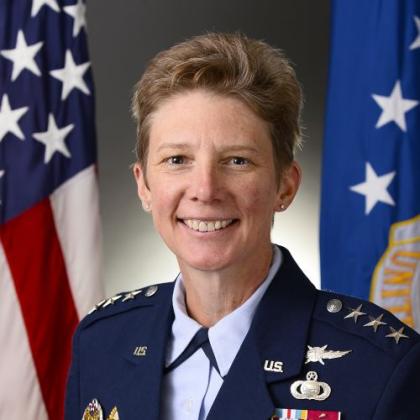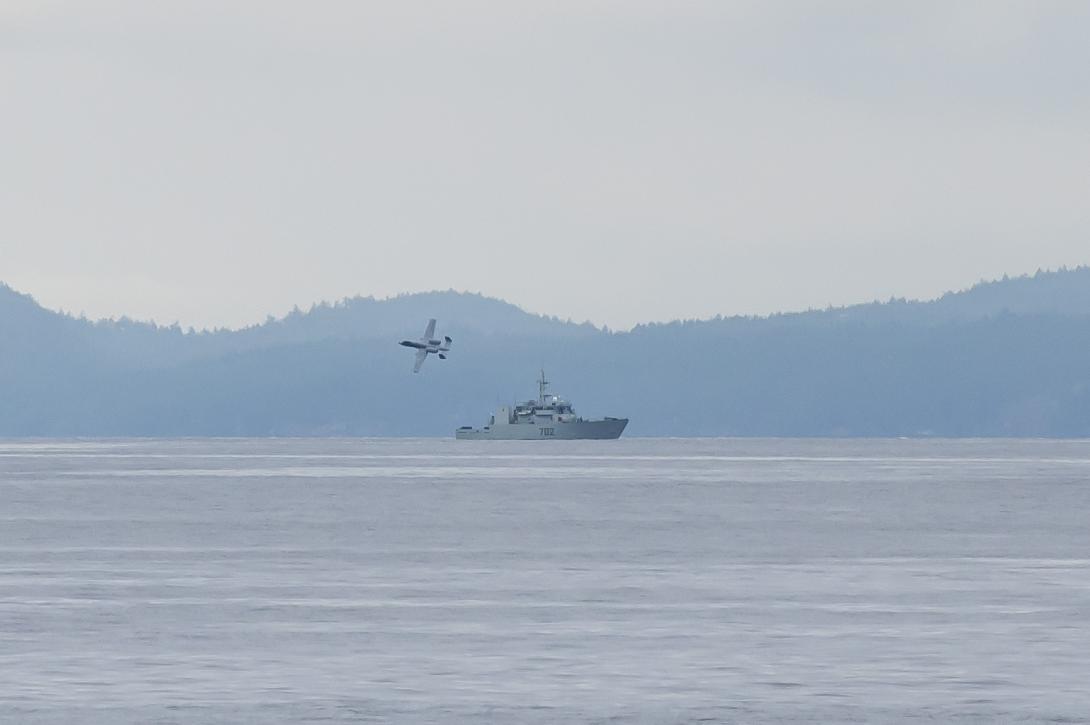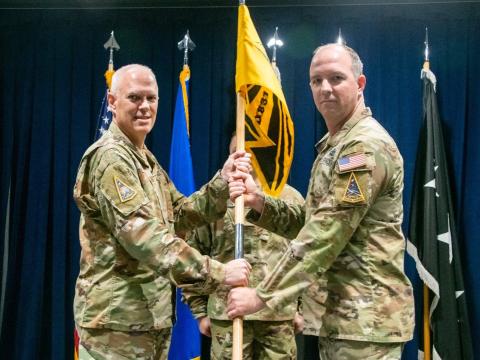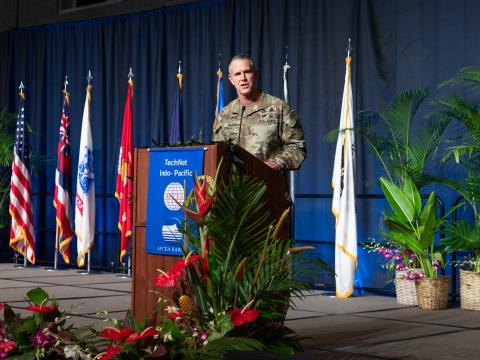Operating Without the Luxury of Time
To successfully deter—or if necessary, defeat—a near-peer adversary, the U.S. military must improve how it handles data. For the U.S. Air Force, this means harnessing every source as a sensor, making sense of data and actually delivering a decision advantage, said Lt. Gen. Leah Lauderback, USAF, deputy chief of staff (DCS) for Intelligence, Surveillance and Reconnaissance and Cyber Effects Operations, Headquarters Air Force. The DCS spoke November 14 at the AFCEA Alamo Chapter’s annual ACE event, held in San Antonio.
“Data is going to shape how we compete with peer-to-peer competitors,” she said. “It's how we're going to be able to deter. It is how you're able to win in conflict. [The thing is], we’ve always used data ... since the beginning. It's just a matter of how fast you use it, how much we might trust it, how much we're able to bring it together from multiple sensors and sources, to give the highest competence type of assessment from an intelligence perspective, or from an operational perspective, such as in the cyber domain.”
Gen. Lauderback wants give younger airmen, in particular, a perspective on data. “It's just pretty simple,” she said. “We've been using data for every decision that we've made. We go with the information that is presented to us. And in some cases, we have better opportunities to make better decisions based on the information that is in front of us.”
What is different now about the Great Power Competition, or GPC, mission against nations such as the People’s Republic of China, is that to enable speed in decision making, the United States must harness greater amounts of information. “What I do think is that from a speed or maneuver, or mass, or any of the principles with war, more data will help us to make better decisions,” Gen. Lauderback said.
She used the delay in assessing battle damage during the air war in Iraq as an example. It took precious time to understand what targets were hit, and what needed to be hit again. “That [assessment] took us, five days, even a week, perhaps, to actually understand,” Gen. Lauderback explained. “We don't have that luxury of time. That's the issue. If we are going to have a conflict, or a crisis with China, that's the issue we have.”
Given there will be no abundance of time against such a foe, the service must address a key gap: make every source a sensor and interconnect them into an Advanced Battle Management System (ABMS). “I am consistently frustrated by the fact that we have capabilities that have been built in a stovepipe over a decade ago and there is absolutely valuable data or information that can be gleaned or collected from these airborne capabilities or space capabilities, however, they're not connected,” she shared.
Even systems for targeting can be used for intelligence, to understand an environment or pattern of life, or to assess the order of battle of an adversary. “But what we're not doing very well yet is integrating all of those sensors,” the general noted.
Additionally, the service must be able to make sense of the data—and ultimately rapidly deliver a decision advantage. The Air Force is taking several key steps to address these gaps, the general said. The fiscal year 2024 budget allocats funds for digital infrastructure for intelligence, surveillance and reconnaissance (ISR DI), with which the service will begin the architecture for that infrastructure.

With the ISR digital infrastructure, I'm not just talking about airborne platforms or platforms that the Space Force might put up. I'm also talking about anything that comes from the intelligence community. That needs to be fed into our ISR digital infrastructure, and then that infrastructure is a plug in to ABMS.
“With the ISR digital infrastructure, I'm not just talking about airborne platforms or platforms that the Space Force might put up,” Gen. Lauderback clarified. “I'm also talking about anything that comes from the intelligence community. That needs to be fed into our ISR digital infrastructure, and then that infrastructure is a plug in to ABMS.”
Battle managers operating in the GPC mission must increase the amount of intelligence to better understand and improve decision making, given the demands of the future, more complex battle environments.
“The secretary of the Air Force, he talks a lot about having a sense of urgency, and I will just double down on that—we absolutely have to be prepared,” Gen. Lauderback stressed. “We're in competition today. But we have to be prepared for conflict.
“The idea here, of course, is to get the best amount of data with the highest level of trust so we can make better decisions, …. and every single one of you is a partner in this.”






Comments